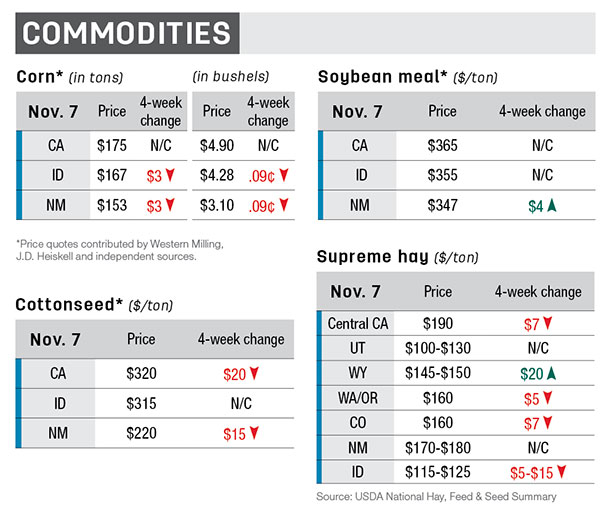Calving season is quickly approaching and, as we should all know, nutritional requirements increase as cows get closer to calving. Cow mineral needs can increase 60 percent during the last trimester – making it a critical time for mineral supplementation. Proper mineral nutrition can help prevent a number of health disorders prior to calving.
Since having cows on a solid mineral program can help set your cow herd up for success, here are a couple of considerations to help improve your bottom line.
Investigate your mineral needs
This is challenging due to changes in animal requirements, differences in forage mineral concentrations and guaranteeing sufficient individual intake. Start with getting a good estimate of mineral intake within the cow herd. This requires you to know or predict the mineral concentration in your forage.
In the western U.S., forage concentration of phosphorus, magnesium, copper, zinc and selenium are usually not sufficient to meet cow requirements. Therefore, forage testing is essential to more accurately design the correct mineral mix for your operation.
Design your mineral mix
Selecting a complete mineral mix, including trace minerals (copper, zinc and selenium), is key. If unsure of forage mineral concentrations, there are a couple of general recommendations to follow.

Cows wintered on dormant native range and fed a protein or energy supplement could get by with a basic mineral formulation (12 percent calcium; 6 percent phosphorus; 5 percent magnesium).
Be sure to factor in the mineral contribution of the protein or energy supplement being fed, as it can greatly impact the calcium-to-phosphorus ratio needed. For cows grazing winter pasture (clover or ryegrass), a high magnesium formulation (12 percent calcium; 4 percent phosphorus; 10 percent magnesium) should be used.
Make good use of your mineral program
This begins with effective delivery. Two methods could be used depending on your situation: If feeding a protein or energy supplement, the mineral mix could be added directly to the supplement. A free-choice loose mineral is also commonly used.
Free-choice can be lower-cost, but it is more difficult to regulate intake. Make sure to monitor intake in this situation. If intake needs to increase, check the salt (i.e., in the mix and other potential sources) and consider moving the feeder location. If intake needs to decrease, provide a salt block or decrease the total amount being fed.
Additionally, be aware of the mineral source. Organic forms (complexes and chelates) are used more effectively by the cow than inorganic forms (carbonates and oxides) but are more expensive.








